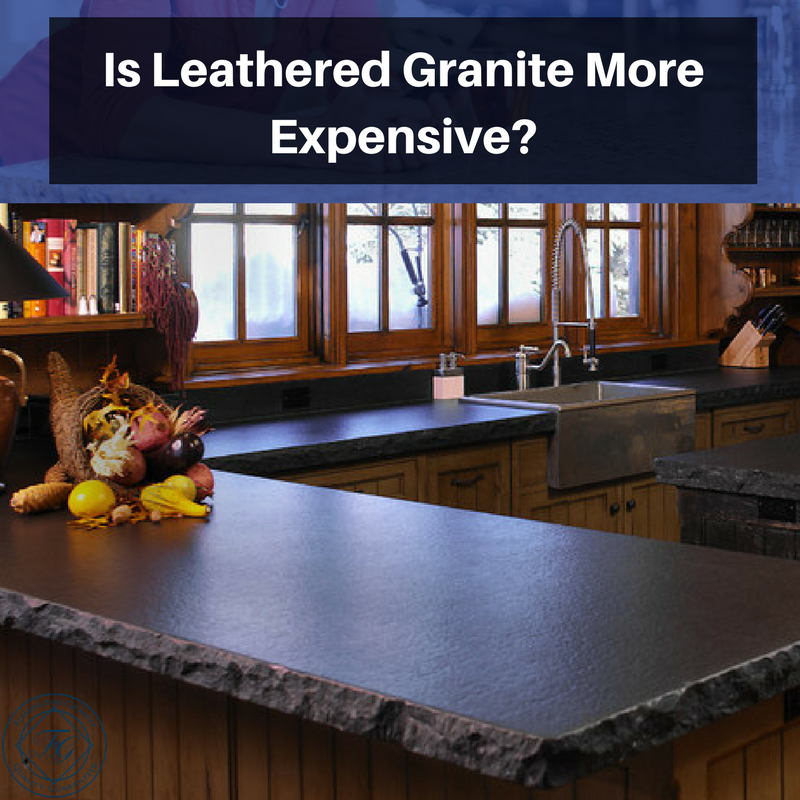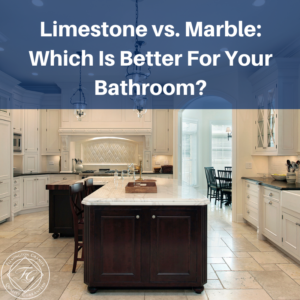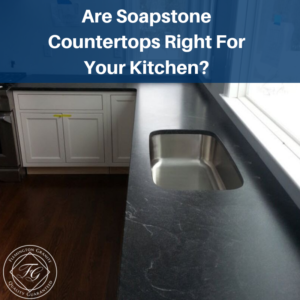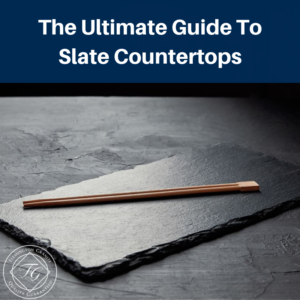
What Is Leathered Stone?
As a homeowner about to embark on a search for countertop material choices you may or may not have come across leathered stone in your various travels. With so many offerings of countertop materials that are available now, it’s easy to get lost among all that is out there, so if you aren’t familiar with leathered stone, then you are probably wondering how is leathered granite made and how is it different from other countertop materials?
Leathered stone has a textured aspect in its finish as opposed to one that has a glossy or shiny surface. It has texture and is more rustic in appearance as it is characterized by pitting and cracking on its surface. It can be compared in looks to a piece of aged leather.
The stone is fabricated through a leathering process that entails the use of brushes that are diamond tipped. The brushes are activated to move across the surface of a flat or honed surface and modify it through the differing levels of grit that the brushes deliver to the surface. The brushes can create a surface that results in indistinct dimpling, cracking and other indentations that result in a textured and somewhat uplifted appearance. Textural aspects depend on the actual choice of stones utilized in the leatherered granite process. Stones that are more balanced and equal in color consistency will be more subtle in their transformations; whereas, more varied stones will take on greater textural capacity.
Leatered stone textures can vary from selection to selection and there may be pieces or slabs that have more deeply engrained features in their appearance as opposed to other pieces. It does provide a different approach to countertop use as it has a certain natural warmth and homey feeling in its varied compositions and selections, yet it can be classic and fashionable at the same time.
Why Choose a Leathered Finish?
Choosing a leathered finish is one of personal taste, but leathered countertops are gaining popularity because of their varying textures and colorations that are appealing to today’s sophisticated and style conscious homeowners. They are turning to and selecting alternatives like leathered granite as they want the edge over more traditional looks. Polished, flatter, and honed finishes are still in fashion, but the beauty and durability of a leather look can be a welcome addition in contrast to a more traditional, polished stone countertop.
Advantages of Leathered Granite Countertops
There are advantages to leather granite countertops as opposed to those that are polished and smooth looking. Leather-look countertops are resistant to everyday smears, splotches, stains and fingerprints, plus they more easily repel water and other liquid spills that create spots and streaks.
The leathering process alone allows for resistance to stains. In addition, a leathered finish is actually easier to clean in comparison to more traditional granite countertops where crumbs, dirt and other debris can accumulate. Also, the surface texture of a leathered countertop is nice to the touch and resistant to slippage, which helps with water accumulation around sink areas and other wet spaces in a kitchen environment. Like polished granite, leathered granite does require sealing and maintenance, which should be done at least once a year, and every few years thereafter.
Is Leathered Granite More Expensive?
The cost of leathered granite vs polished granite will depend on variables, such as the location or region of the materials, actual availability of the materials themselves, the types of finishes, colors, styles and patterns in stock as well as installation and labor costs.
Polished granite tends to be less expensive than leathered granite as it is popular and usually readily available. It is more likely to be in stock from suppliers, which makes it less expensive than a leathered granite. Leathered granite is a less common finish and may require special ordering and other particulars that increase costs, even though the fabricating process is usually less involved than a polished stone procedure.
If you want more information about leathered granite and the cost and expenses involved, or if you just have general questions about this type of finish, complete the online contact form and a representative will get back to you with answers to your questions.






